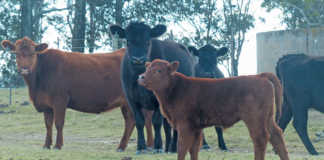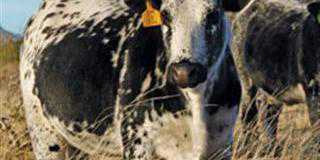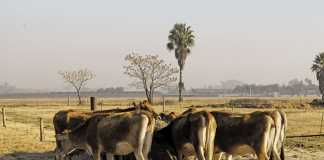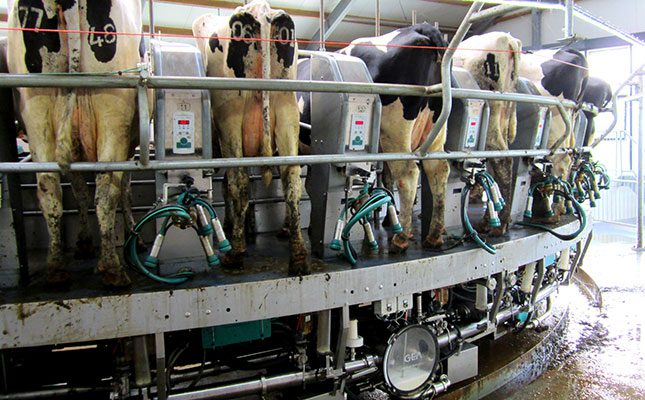
Photo: Wikimedia commons
According to the US Department of Agriculture (USDA), the 2023 financial year was a challenging one for US dairy exporters, largely due to sluggish economic growth among importers and increased competition from New Zealand and the EU.
This was revealed in its latest report on the global trends on the dairy market.
However, the report continues to state a weaker dollar had helped ‘cushion’ losses in price competitiveness.
READ Boosting dairy profitability: it’s not all in the genes!
“Throughout the year, export values of non-fat dry milk, cheese and whey remained lacklustre, primarily due to weakening demand in China and Southeast Asia.
“Globally, higher interest rates impacted discretionary spending, particularly affecting dairy consumption, which is not a traditional staple of Asian diets,” says the report. However, despite this, Asia remains the most significant growth region for major exporters.
In 2024, it is expected that US exporters will follow similar challenges.
“A combination of factors has impacted demand in key markets in Asia in 2023 and [are] expected to continue into 2024. In 2023, after the end of COVID-19 lockdowns, governments were under pressure to rein in fiscal spending and temper aggregate demand to combat a high level of inflation.
Central banks have raised interest rates to increase the cost of credit, leading to slowing private business investment for manufacturing exports in markets like the Philippines and Thailand. The resulting slowing of GDP and income growth has had spillover effects on discretionary spending.
Consumers have also been grappling with high food inflation, substantial currency depreciation against the US dollar that has also contributed to higher imported food prices, and high energy, all of which have put a dent in consumer purchasing power.
“In China, the largest import market for dairy products, surplus raw milk production led to government subsidies to stabilise the domestic processing sector and resulted in reduced demand for imports of whole milk powder from New Zealand and the US.”
China also imported less whey, which is used in infant formula and pig feed, due to a decrease in birth rates and lower pork prices, the report explains.
Pig production is expected to continue to decline, which means that the country will continue to import less whey in 2024. China’s large inventories of skim and whole milk powder will also limit export opportunities for the US and other countries.
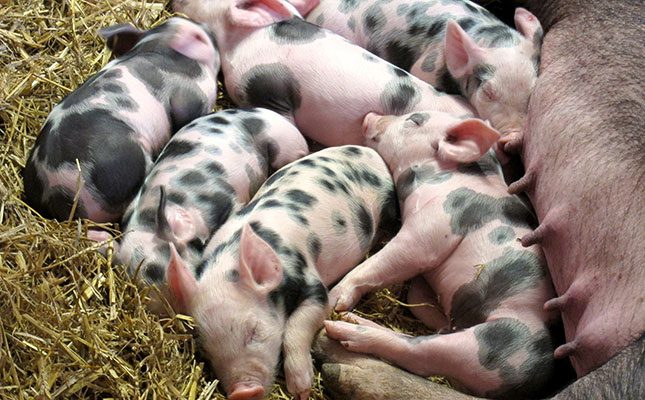
China imports of whole milk powder are also forecast to drop 3% in 2024 to 425 000t due to a build-up of stocks in 2023 and developing consumer preference for raw milk products over reconstituted products.
Butter demand in China has grown tremendously over the past decade. However, says the USDA, growth in domestic consumption is expected to be small in 2024.
“Bakeries make up most butter use in China and, as economic prospects for the year have turned pessimistic, many have cut back on capacity utilisation to save costs. Additionally, bakeries have reportedly opted to use more plant-based butter rather than dairy butter to cut costs.
“While China has made concerted efforts to become self-sufficient in dairy products, processing capacity remains a significant constraint to butter production, and imports remain the primary means of supply. Imports in 2024 are forecast to mirror domestic consumption and remain little changed, with New Zealand acting as the dominant supplier.”
Australia
In Australia, milk production is forecast to increase 1% to 8,5 million tons in 2024 as beef cattle prices have fallen and labour shortages have abated, says the USDA.
“Both [these] issues have been major contributing factors in the decline in milk production over the prior three years. A rebuild in the beef herd after multi-year droughts from 2017 to 2019 saw significant conversions of dairy farms into beef cattle farms, where operations are less labour intensive, and operating costs are more easily controlled.
READ Why nutrition is crucial for dairy cow fertility
“Over the last 18 months, beef cattle prices have retreated considerably as beef cattle supplies rebounded. Labour shortages continue to be an issue for Australian dairy farmers, but have also improved as the number of working holidaymakers has returned to pre-pandemic levels and workers entering as part of the Pacific Australia Labor Mobility scheme are at record levels. The dual effects of improved labour availability and significantly weaker beef cattle prices have stifled the incentive for dairy farmers to transition to beef cattle farming,” says the report.
Farmgate prices are also expected to remain strong in 2024, further fuelling milk production in the coming year. The increase in farmgate prices is largely a result of a growing number of domestic processors and diminishing milk supply.
“Australia consumes 65% of its production domestically and higher costs are passed to domestic wholesalers, particularly with short shelf life products with limited import competition.
The relatively high share of milk used domestically, which limited exposure to lower international prices, coupled with ability to pass higher costs to domestic wholesalers intensified competition for milk supply, ultimately contributing to farm-gate milk prices this season that surpassed initial projections.
This is evident in the price gap between Australian and New Zealand milk, where the former exports 35% of production, while the latter, heavily influenced by world export prices, exports 90% of its milk production.
Cheese production is expected to increase by 5% to 445 000t in 2024, continuing the industry-wide trend of milk processors funnelling the larger milk pool toward cheese and away from other processed products, says the USDA. Cheese production remains a profitable industry here.
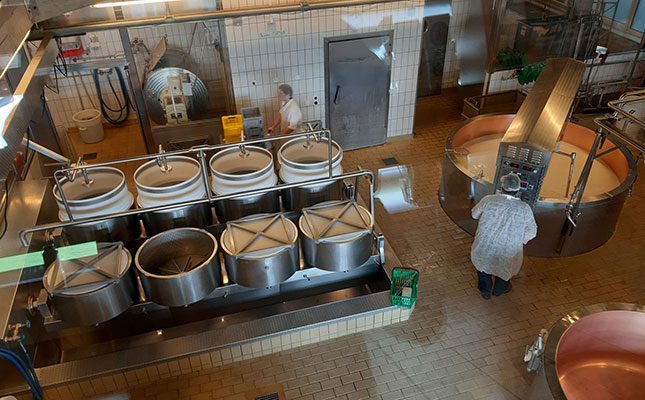
“Over the past 12 months, prices for cheese were more resilient relative to other dairy commodities, declining at half the rate of skim milk powder and whey and less than butter. Cheese exports are forecast to rebound significantly in 2024 after a weak 2023, supported by improving import demand and a regain in competitiveness in Japan, China, South Korea, and the Philippines.”
Skim milk powder (SMP) production is expected to remain steady at 125 000t in the coming year. This is in line with the “underwhelming performance of exports in 2023”, which, the USDA says, was a year of reduced competitiveness due to high farmgate milk prices.
However, as farmgate milk prices gradually ease in the latter half of 2024, SMP exports may become more competitiveness. Having said that, Australia is unlikely to significantly increase SMP exports, as this would be impossible without allocating larger portions of the milk pool to SMP production. Prices are still more favourable for milk production.
New Zealand
In 2024, New Zealand’s milk production is expected to drop marginally from 21,5 million tons in 2023 to 21,2 million tons.
“Factors most prominently contributing to this outlook include the impact of El Niño weather patterns, a reduction in farmgate milk prices, persistent on-farm inflation, and a shrinking dairy herd,” the USDA says.
READ Higher milk production, lower carbon footprint
Farmgate milk prices are particularly under pressure, with Fonterra recently reducing the mid-point payment being offered to producers for milk solids to NZ$6,75 (R77,90), says the USDA. This is a 27% decline year-on-year.
“This coincides with the highest on-farm inflation in 40 years, affecting all farm inputs from energy to feed to labour,” says the USDA.
Heightened costs are largely driven by the increase in interest on farm debt, which has doubled over the last 12 months.
Cheese production in 2024 is expected to remain steady at 400 000t, which is the same tonnage produced in 2023. This is despite the marginal decline in milk production, and is driven by stronger demand for cheese in Japan, China and South Korea.
“Sustained investments over time by processors have greatly expanded New Zealand’s processing output, in turn allowing exporters to meet rising demand from burgeoning Asian markets, especially for mozzarella. [However], cheese exports are forecast to decline in 2024, as increased competitiveness from Australia and the EU is expected to pressure market share in markets like China and Japan.”
Butter production is expected to increase 3% to 525 000t compared with 2023.
“Volumes are expected to shift towards production of high milk fat products as demand for whole milk powder remains depressed in major markets including China, Indonesia, Bangladesh, and Singapore. However, processing capacity remains slow to respond to changes in market prices despite strengthening butter prices. Therefore, much of the ramp up in butter manufacturing is expected in the second half of the year. Exports are forecast to decline in 2024 relative to a strong export year in 2023 as exportable supplies remain relatively tight.”
New Zealand’s whole milk powder (WMP)production is forecast to decline to just under 1,4 million tons in 2024, reflecting a smaller milk pool and lower profitability relative to other products, says the USDA.
“Lower WMP output is expected to negatively impact shipments, with exports forecast to decline by 2%. Forecast weaker import demand from China and stagnant demand from Algeria and Indonesia are also expected to weigh on exports.”
Europe
In the EU, a marginal decline in milk production is expected, dropping from 144,8 million tons to 144,6 million tons.
“A modest improvement in cow productivity is insufficient to counteract additional reductions in the dairy herd. Persistent declines in farmgate milk prices, coupled with consistently high production costs, continue to exert pressure on dairy farmers, particularly in major producing member states such as Germany, France, Spain, and Poland.

“The impact is more pronounced among smaller farms that lack the capacity to capitalise on efficiencies of scale or organised negotiating power with processors to drive competition for portions of the milk pool. Notably, producers are also grappling with adherence to environmental regulations.
Initiatives such as the Dutch government’s nitrogen emissions cap and the Irish government’s proposed voluntary payment scheme to incentivise dairy cow slaughter add further complexity. These factors are expected to lead to further market consolidation and closures among smaller producers. However, larger operators are anticipated to maintain herd numbers, thereby slowing the pace of herd reduction in 2024.”
Cheese production is forecast up marginally in 2024 despite weaker milk production as profitability is expected to remain higher compared to butter and milk powders, says the USDA.
Slowing demand
“As the industry grapples with a reduced milk supply, processors are expected to funnel a larger share of the milk pool toward cheese production, prioritising it over other dairy products.
“Additionally, slowing demand in China for milk powders may encourage an increased focus on cheese production.
“On the domestic front, heightened consumption is expected, driven by rising incomes, economic recovery, and the resurgence of the hospitality sector and tourism to pre-COVID-19 levels.
“EU cheese exports are estimated to climb by 1% in 2024, propelled by a global uptick in cheese demand. UK importers are actively seeking cost-effective EU products to offset higher exports.”
READ Maximise dairy profits with beef semen
Butter production is expected to decline to 2,1 million tons in 2024, which is down 20 000t from 2023. This is due to processors prioritising the smaller milk pool toward cheese production.
“Improving butter prices in 2024 are expected to dampen an expected shift away from butter production. However, domestic consumer preferences for healthier alternatives are expected to weigh on processors’ motivation to expand production.”
Butter exports are expected to decline 4% to 275 000t because of lower production and stronger export competition, particularly from New Zealand.
“Butter prices bottomed out in September and are expected to stabilise throughout 2024, however, a price gap is beginning to emerge with Oceania. In November, EU prices were $2,57/lb whereas Oceania prices were $2,25/ lb. This wedge is expected to persist through the year, constraining prospects for further export growth in major markets in East Asia.”
SMP production is forecast at just under 1,5 million tons, a drop of 3% year-on-year, as lower milk production and weaker import demand from Asia encourages processors to shift processing milk into cheese production. Exports are expected to decline 1% to 810 000t.
“China and Algeria are once again expected to be the EU’s largest export markets for SMP. However, growth will be muted in 2024 by higher milk powder production in China and import controls in Algeria.”
Read the full report at US Department of Agriculture (USDA) Global Agricultural Information Network (GAIN) report








